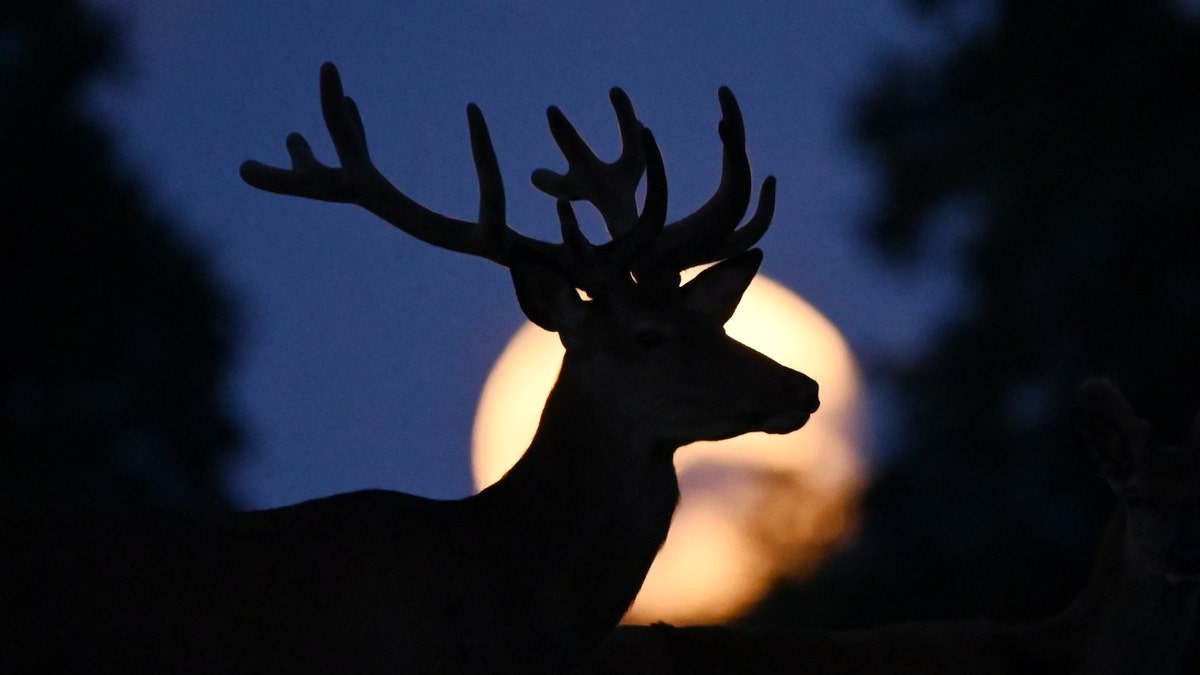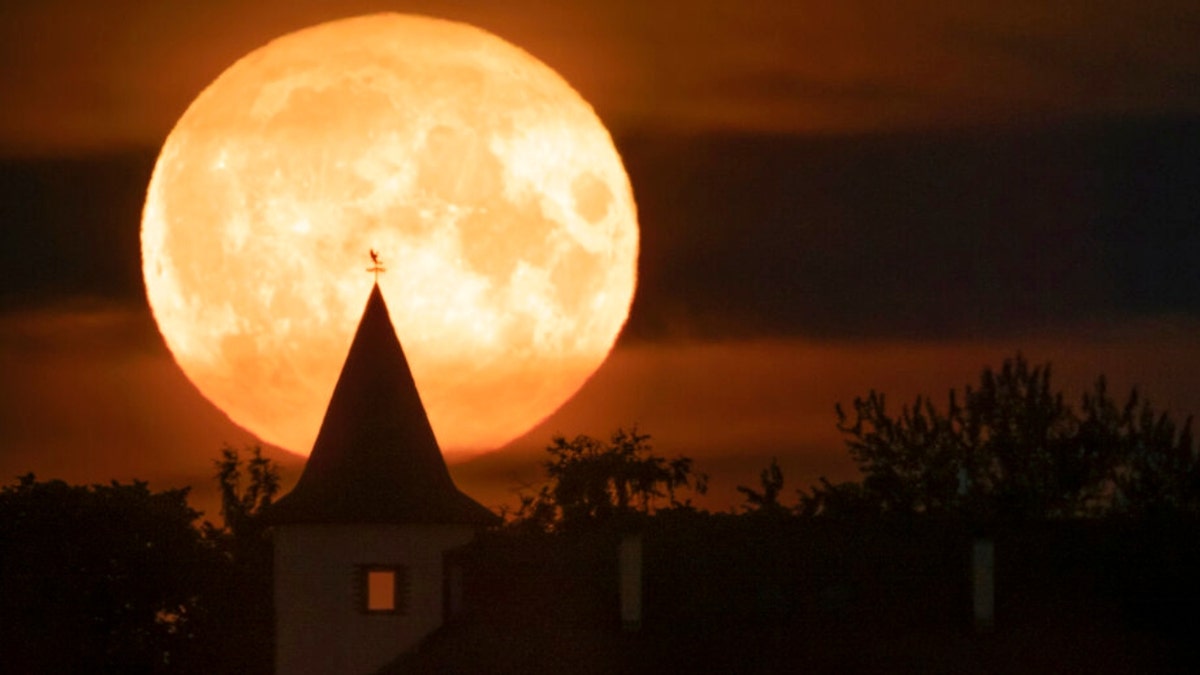Orange moon sinks below Providence skyline in stunning timelapse footage
A nearly full moon can be seen sinking below skyscrapers in Providence, Rhode Island. Credit: Mike Cohea via Storyful
July's full moon, also known as the full buck moon, is just around the corner.
The next full moon will hang in the sky on the morning of July 3, according to NASA.
It will appear opposite the sun in Earth-based longitude at 7:39 a.m. ET.
As twilight ends that evening, the rising full moon will be three degrees above the southeastern horizon and two of the five visible planets will be in the sky, including Venus and Mars.
ASTRONOMERS USING NASA JAMES WEBB SPACE TELESCOPE DISCOVER AN INTERCONNECTED WEB OF GALAXIES

A full supermoon known as the buck moon is seen as a deer grazes outside the village of Taarbaek, some 15 kilometers north of Copenhagen, Denmark, on July 14, 2022. (Photo by Sergei Gapon/Anadolu Agency via Getty Images)
The moon will appear full for as many as three days.
This is the first full moon of summer, and skywatchers will be able to see the sturgeon and blue supermoons come August.
Many publications consider this the first of four consecutive supermoons this year.
JAMES WEBB SPACE TELESCOPE DETECTS NEW CARBON COMPOUND IN SPACE FOR THE FIRST TIME

The full moon rises over a private house in the village of Putilovo, 70 kilometeres (43 miles) east of St. Petersburg, Russia, late Wednesday, July 13, 2022. (AP Photo/Dmitri Lovetsky)
A supermoon is either a new or full moon that occurs when the moon is within 90% of perigee, its closest approach to Earth. Full supermoons are the biggest and brightest full moons for the year, but there are different thresholds for deciding which moons qualify as a supermoon.
It is known as the full buck moon, as this is the time of year when male deer antlers are in full growth, according to the Maine Farmers' Almanac.

The full moon known as the buck moon rises over the New York City skyline, as seen from Weehawken, New Jersey, July 23, 2021. (REUTERS/Jeenah Moon)
In addition, the Haida and Tlingit Indian Tribes of Alaska referred to the July full moon as the salmon moon, because it was a time of significant salmon migration.
CLICK HERE TO GET THE FOX NEWS APP
The Algonquin tribes of the Northeast also called this the thunder moon because of early summer's frequent thunderstorms.
In Europe, this was called the hay moon, after the haymaking in early summer, and sometimes the mead moon or rose moon.
International Moon Day is also coming up on July 20.

